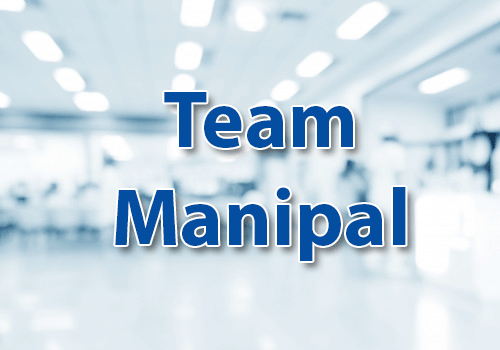
The number of patients on the organ transplant waiting list has increased rapidly when compared to the number of available organs. This has resulted in a longer wait for transplantation as well as increased morbidity and mortality. More organs are needed for transplantation, so extended criteria donors and ABO-incompatible organs are being used.
Recently, it was discovered that kidneys donated by spouses and unrelated living donors have an unusually high graft survival rate. It is not always possible to find a compatible kidney donor. As time runs out, emergency cases may necessitate an ABO-incompatible kidney transplant. Because your donor's blood type and your blood type are incompatible, you will be given medical treatment before and after your kidney transplant to reduce antibody levels in your blood and the risk of antibodies rejecting the donor's kidney.
At Manipal Hospitals, our eminent team of top nephrologists in Bangalore provides information on ABO incompatibility and necessitates an ABO-incompatible kidney transplant to guarantee successful transplantation. The specialists at Manipals share their knowledge and raise awareness about such transplants and their likelihood of success. Check out the links below to learn more about ABO incompatibility and paired exchange transplantation.
Despite having a live donor whose choice has been made, the recipients frequently discover that their blood type is incompatible with that of their donor. Additionally, they can discover that they have strong anti-HLA antibody titres and a favourable pre-transplant cross-match as a result of previous blood transfusions or unsuccessful transplants. These transplants are becoming possible as these immunological challenges are overcome.
ABO Incompatibility
The four major blood types are A, B, AB, and O. The classifications are based on small substances (molecules) found on the surface of blood cells. When people with one blood type receive blood from someone with a different blood type, their immune systems may become activated. This is known as ABO incompatibility.
People with one blood type may produce proteins (antibodies) that cause their immune system to attack one or more other blood types. A reaction can occur when exposed to different types of blood. This is crucial when a person requires a blood transfusion or an organ transplant. To avoid an ABO reaction, the blood types must be compatible.
For example:
-
Individuals with type A blood will react to type B or type AB blood.
-
Individuals with type B blood will react to type A or type AB blood.
-
Individuals with type O blood will react to type A, type B, or type AB blood.
-
Individuals with type AB blood will not react to type A, type B, type AB, or type O blood.
When given to people with blood types A, B, or AB, type O blood does not elicit an immune response. This is why people of any blood type can receive type O blood cells. Universal donors are people who have type O blood. People with type O, on the other hand, can only receive type O blood.
To avoid an immune reaction, both blood and plasma transfusions must be matched. Before anyone receives blood, both the blood and the person receiving it are thoroughly tested to avoid a reaction. Typically, a reaction occurs as a result of a clerical error that causes someone to receive incompatible blood.
How to Cope with ABO Incompatibility during Transplantation
Patients who require a kidney transplant frequently have a living donor. Unfortunately, many living donors may not have the same blood or tissue type as the recipient. The transplant will fail if the donor organ's blood and tissue do not match the recipient's blood and tissue. Patients and donors who are incompatible may be interested in paired exchange transplantation.
What has Paired Exchange Transplantation?
The first tests that are typically done for all donor-recipient pairs are a blood type and cross match to see if the donor and recipient are "compatible". Previously, an incompatible couple had no other option, and the potential recipient simply remained on the deceased donor's waitlist. Even incompatible couples can now benefit from the many advantages of living donation. Paired exchange, also known as a paired donation, is a choice in which incompatible donor-recipient pairs are matched with other pairs to "exchange" donors.
In a paired exchange, the recipient in one pair is compatible with the donor in the other pair, and vice versa. The transplant centre arranges a "swap", in which each donor donates a kidney to the recipient in the opposite pair. This enables two transplant candidates to receive organs and two donors to donate organs, despite the fact that the original recipient and donor pairs were incompatible.
Donors and candidates are both medically and psychologically evaluated and tested to ensure that the benefits outweigh the risks. The operations can take place in the same or different hospitals. Although doing them at the same hospital may have benefits, it may also result in additional travel and housing costs for one recipient and donor pair.
-
Domino Kidney Paired Exchange
A non-directed or altruistic donor initiates a domino kidney paired exchange. Instead of only benefiting one person, this donor can allow many incompatible pairs to be transplanted. The difference between this example and the "Kidney Paired Exchange" is that donor #2 is not compatible with either recipient #1 or recipient #2. As a result, the altruistic donor enables the other pairs to be exchanged, resulting in a domino effect.
-
Ongoing Donor Chains (Never Ending Donor Chains)
Recently, altruistic or non-directed donors have started donor chains, which have the potential to facilitate thousands more living donor transplants. Donor #2 does not donate in this exchange. Donor #2 is the "bridge donor" for the next "chain". Donor #2 serves in the same capacity as the altruistic donor. This chain could continue indefinitely with a new bridge donor. Two pairs and an altruistic donor are used, but any number of pairs could be transplanted.
-
Compatible Pair Exchange
To facilitate transplants with incompatible donor and recipient pairs, compatible donor and recipient pairs are used. If the recipient receives a better HLA-matched kidney, a kidney from a younger donor, or a kidney of a larger size, this benefits the compatible donor and recipient pair. The goal is for everyone who participates in such an exchange to benefit. A donor-recipient pair that is compatible is one in which the donor is blood type "O" and the potential recipient is blood type "A", "B", or "AB".
-
Kidney-Paired Exchange Programs
Manipal hospitals is considered to be the best nephrology hospital in Bangalore for its own kidney-pair exchange that they organise within their incompatible pairs. The nature of kidney-paired exchange is that when there are many incompatible pairs, the likelihood of finding a compatible pair increases. There are organisations that "coop" with other hospitals in order to increase the chances of being "matched" with another incompatible pair. The following organisations have agreements with numerous hospitals to increase the likelihood of this happening.
Key-Points for Paired Exchange Transplantation
-
Each transplantation centre should implement an effective kidney-paired donation programme.
-
Kidney paired donation has all of the benefits of living donor kidney transplantation (similar patient, graft survival, cost, and outcome) without the long wait time associated with deceased donor kidney transplantation.
-
A successful kidney-paired donation programme requires a healthy mix of enthusiasm, mathematical modelling, patience, and teamwork.
-
To maximise the potential of kidney-paired donation and increase transplantation of O group and sensitised patients, transplant centres should remove barriers to the widespread implementation of a multicentre, national kidney-paired donation program.






















 6 Min Read
6 Min Read















